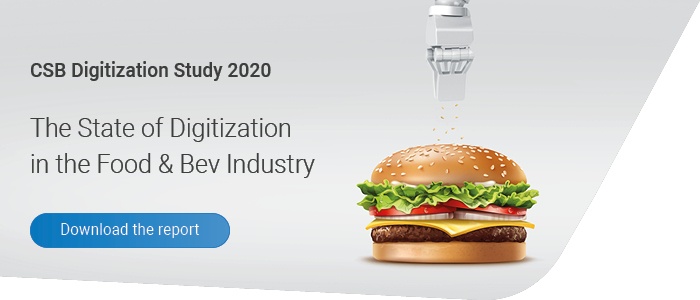In view of rising costs, food companies have to further optimize their processes. Three examples of how you can cut costs without breaking your budget.
The food industry is under pressure. In particular, the high raw material prices further reduce the margins, which in many places are already quite low. The good news is that there are still many areas that could be optimized with little effort. First and foremost, it is digitalization that brings new possibilities to the industry for rationalizing processes, saving materials and, as a result, reducing costs. “We established that you can reduce material costs by up to five percent in procurement, and by one to four percent in production. In terms of transport costs, there is savings of up to 15 percent,” Dr. Peter Schimitzek, Chairman of the Board of CSB-System AG.
Up to 5 percent material savings through improved recipes
Such a boost in optimization is exactly what food enterprises need. The margins are far lower than in any other industry, while the bargaining power of trade is greater. The price pressure mainly results from the high costs of material use. In the food industry, material costs make up about 60 percent of the sales revenues, which is much more than in most of the other industries. What needs to be done? “The road towards a higher margin is, for example, via the optimization of recipes,” says Dr. Schimitzek. Specific software programs like CSB-Recipe Optimization handle this task in a fully automated manner. Taking into account chemical and technological restrictions, they calculate the most cost-efficient composition of recipes while maintaining constantly high quality levels. In this way, you can reduce material costs significantly and increase the gross margins for every product. Depending on the original recipes, you can save more than five percent in material input at the first level of optimization. On average, further savings converge around one to four percent. The CSB-System enables variable recipe compositions so you can respond to strong fluctuations in raw material prices while retaining your flexibility throughout the entire production process.
The first profit lies in purchasing
However, improving the recipe is only a minor part of the obtainable optimization potential. You can make the actual quantum leap only by close-knit linking of all business units in the ERP system. This starts with the purchase of raw materials, Schimitzek explains. “If you initiate the recipe optimization only when you already have all raw materials in stock, it is too late. Ideally, you should start with the optimization directly during procurement. Every businessperson knows that the first profit lies in purchasing,” Schimitzek points out. With its procurement optimization, CSB offers a comprehensive solution for the process industry that secures the desired quality for customers and production and provides the ideal procurement options to purchasing in a quick and easy manner. The computer aided procurement optimization assists in optimizing the purchasing prices, complies with the quality requirements and meets customer specific requirements. Thanks to the full integration of CSB-Procurement Optimization, internal interfaces can be entirely eliminated. This results in more flexibility and less work in IT. Moreover, the costs are reduced: in combination with CSB-Recipe and Production Optimization, cost savings of one to five percent of the purchased material costs are feasible.
IT-aided production planning is more precise than decisions from the gut
Production is one of the most important stages of current optimization and digitalization activities. You can only work cost efficiently if bottlenecks, resources and values are calculable. This is a highly complex optimization task. “Yet too many companies still leave it up to their production staff to take decisions and establish plans based on gut feelings. Or they use stand-alone solutions that do not communicate smoothly with the ERP software, despite the fact that integrated production planning and control offer many advantages with regard to accuracy and cost efficiency,” says Ed Wood, CEO of CSB North America. Only if you know how efficiently your production and packaging systems are working, and whether they produce the required quality, you can define optimization and saving potentials in production. For example, production planning in the CSB-System supplies long-term, mid-term and short-term planning scenarios. It enables you to plan, organize, and control all production resources like man, machine and material in an optimal manner even in difficult conditions caused by volatile order behavior and a vast variety of units. This secures the required freshness, optimal utilization of plant capacities and a higher throughput speed while reducing the costs.
Advancing digitization with existing solutions
These savings can be invested in further optimization and digitalization. There is a huge potential, also beyond your own company. Looking at the future of production, IT may be exciting. Yet you can control a major part of the costs with the solutions already available today. “Digital solutions for a comprehensive optimization are available - tested, proven, and successfully established. If you also have a committed staff who apply the solutions as well as proper master and process data, there is nothing that could stop the optimization,” Wood says.


